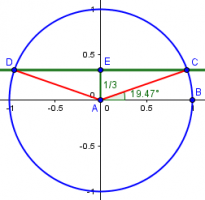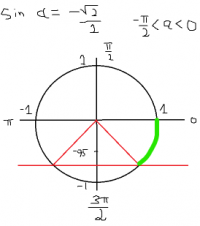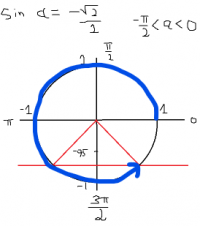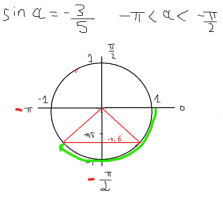The
length of an arc on the unit circle
is the radian measure of the angle! The question is, what sort of answer are they asking for? Did you quote an actual problem as given to you?
My diagram was actually intended to supplement what had been said previously about how many solutions there are, in addition to suggesting what you could do for the problem you stated (which I took to be one you made up with an unclear statement). So I was really helping you more with this new problem than with the one you asked about!
For this first problem, there
is an arc in the given domain:
You show two possible terminal rays, each of which defines two possible arcs in standard position (clockwise and counterclockwise). You need to look for one that is in the right domain, not just pick one and see if it is. I'm presuming you had this arc in mind:
You don't show your actual answer for any of these, so I can't be sure if you are thinking correctly.
Also, given that graphs are included in the problems, I'm wondering if when they ask "Determine graphically the arc", they mean just to show the arc on the graph, not to give a numerical answer. (This is part of the reason we like to see the entire problem!) To do that, you'd need to include what I drew in above, for the one requested arc. What you drew only shows that in each case there are two solutions if there were no restriction.







